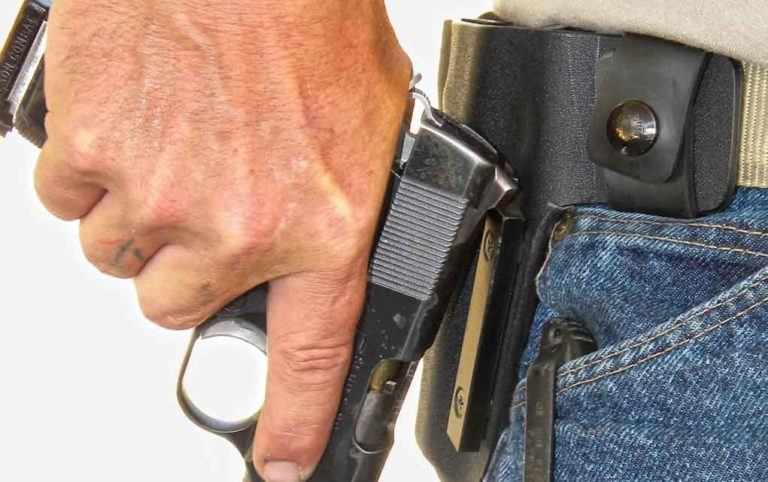
Knowing how to efficiently and effectively reload is a crucial part of operating a defensive firearm in a gunfight.
How to reload your gun to get it back into the fight:
You’re rapidly engaging targets with accurate hits. The weapon runs dry, action locking back on the empty magazine. It’s time to reload. Or, given the option and opportunity, maybe you’ve reloaded before running empty.
If you’re carrying multiple weapons, you might perform a “New York” — transitioning to another weapon — as Jim Cirillo describes below. Regardless of technique used, in order to properly apply these skills, one must understand the details of each specific technique and the principles involved.
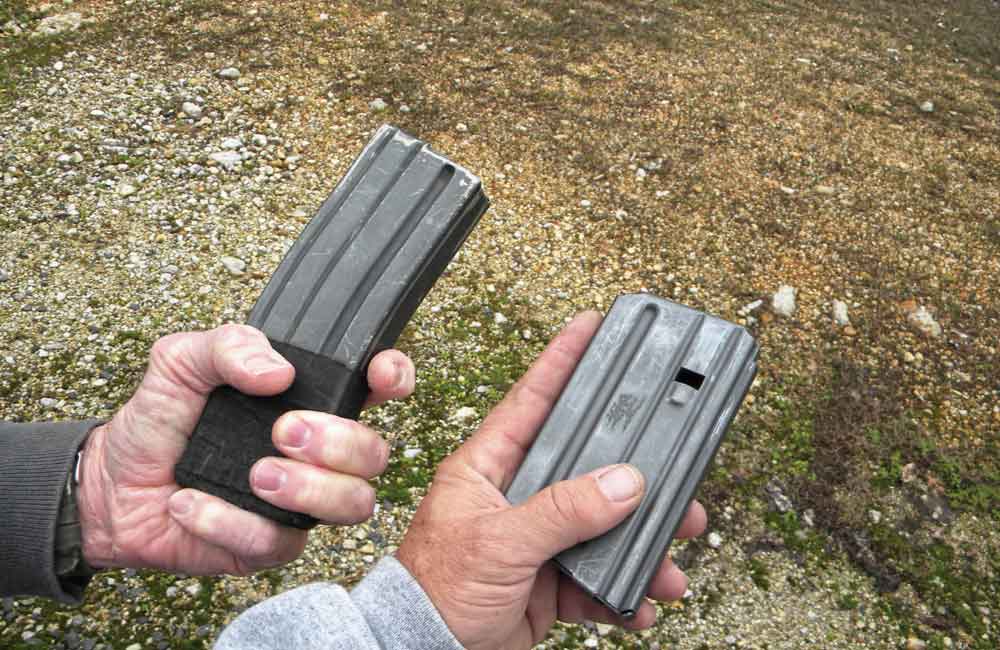
Then, practice until these actions become reflexive — automatic. The reloading techniques are easy to understand, but to apply them correctly and with certainty takes plenty of practice.
The ‘Empty’ Reload
You’re firing and the weapon runs dry; the slide on your pistol or the bolt on the AR locks back on the empty magazine. You dump the empty mag, install a fresh one and chamber a round.
During “functional” manipulations — the empty reload or clearing malfunctions — I teach students to keep the muzzle and sights on target. Your goal is efficiency, accomplishing the task in the shortest amount of time. If you take the muzzle off target to reload and it’s necessary to fire additional shots, you have to get the sights back on target. Cutting out unnecessary movement creates efficiency.
Moving the weapon off target shows the threat(s) that your firearm is empty. Keep the weapon on target, and by the time they realize you’re out, the weapon is reloaded. Remember, threats will be moving. Keep your eyes on target, visually tracking. The hands fix the problem while the body tracks the target with the muzzle.
Reloading begins by taking your finger off the trigger and positioning it outside the trigger guard. No manipulations should occur with that finger anywhere near the trigger. Press the mag release. Right-handed shooters use the right thumb. Lefties use their trigger finger to press the release. With an ambi mag release, left-handed shooters use the thumb of their shooting hand. You will probably need to reposition the gun in your hand to release the mag, but once the mag is out, reacquire a proper firing grip.
With the AR, a right-handed shooter uses their trigger finger to release the mag. Left-handed AR shooters bring the right hand back and use the right thumb to hit the release.
Most pistols and ARs drop the mag free when the release is pressed. Some handguns, such as Glocks with early generation mags, require you to pull the mag free. A sign of a healthy AR and mags is that it drops cleanly.
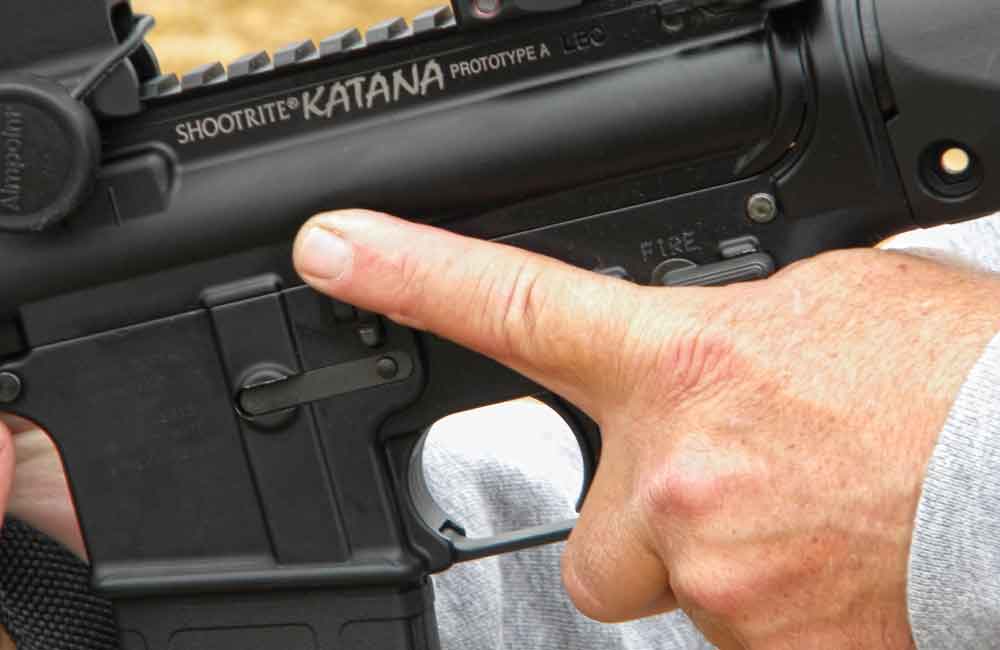
Let the empty magazine drop to the ground. Unless you’re in the military, empty mags are worthless. The support hand acquires a fresh magazine, making sure to get the mag positioned properly in the hand. For pistol mags, the first finger should be running up the front of the mag, touching the top round. The thumb and other fingers are on the sides of the mag, with the basepad or bottom of the mag at the heel of the hand. The first finger on the top round tells you the mag is loaded, and if the round was sticking partially out, you can push it back in the mag or flip it out of the way. This position also makes it easy to align the mag and seat it into the magwell. Consistency is the key, especially with “small” things. Every time you grab a mag, use the proper technique.
The same technique as above works for 20-round AR magazines. With 30-round mags I use a “beer can” grip. The fingers wrap around the front of the mag, clamping the mag between fingers and the heel of the hand. The thumb can wrap around the rear of the mag or point forward in the same direction as the fingers. Grab the 30-round mag down low, toward the bottom. If the hand is too high you’ll have to move it down, repositioning in order to lock the mag in the magwell.
The support hand brings the mag up to the magwell and indexes the back of the magazine with the rear of the magwell. This is the same for pistol and AR mags and it’s a positive index that’s easy to feel, as opposed to having to look. Learn how to manipulate your weapons based on feel instead of having to look at them. This keeps your eyes on target. Plus, it’s likely to be dark, which means you won’t be able to see your weapon anyway.
Once the mag is indexed, align it with the magwell, and aggressively seat and lock it in place. With pistol mags and 20-round AR mags, open up the fingers and thumb so the heel of the hand is on the baseplate or bottom of the mag. During training/practice, use more force than necessary when seating the mag to ensure it locks in place. Then, if you’re a little distracted in an actual confrontation — like if someone is trying to kill you — and use less force than normal, it’s still enough to do the job. With 30-round AR mags, the hand maintains its grip as you seat the mag. Then tug on the mag to ensure it’s seated.
Once the mag is locked in, it’s time to chamber a round. For the pistol, we teach racking the slide to chamber. This is the way the pistol’s designed to function. When the slide is locked rearward, it will still come back a little when you pull it to the rear, so you’re getting full spring pressure to chamber the round. Plus, some pistols don’t have an external slide lock. Racking/cycling the slide is the only way they work. You want one set of skills that works with any pistol because there’s nothing that says you’ll always have your pistol. Finally, cycling the slide is consistent with all my other handgun manipulations.
To release the bolt on an AR, use the bolt catch as a release, which is how the AR is designed to function. For loading/unloading, use the charging handle to manually cycle the action. The more you mess with the charging handle, the more likely you’ll mess it up by short cycling or letting your hand ride it, slowing down its action and creating a stoppage. Using the bolt catch as a release is quick and ergonomic.
Right-handed shooters use their left thumb to release the bolt. The left hand is already on the mag so you just slide up the mag and magwell, and the thumb releases the bolt. Lefties use their trigger finger to press.
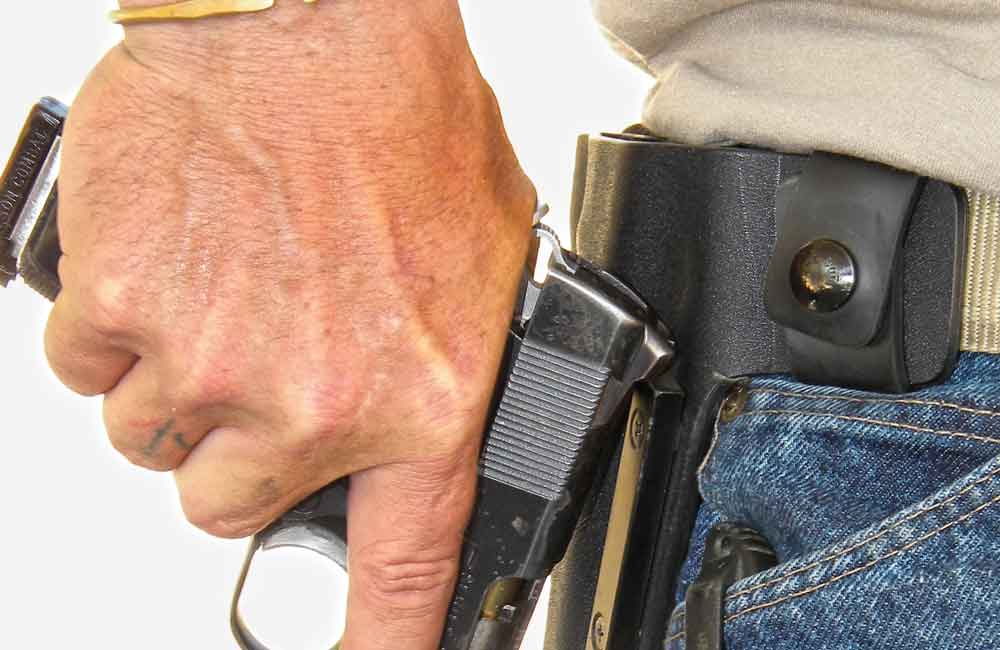
The empty reload is complete, and if necessary, you’re ready to shoot. Make sure the next shot after reloading is accurate. Many rush the shot, trying to make up for lost time. There ain’t no “catchup,” except on hamburgers and hotdogs. You were forced to reload, so now get a good hit.
The Empty Reload review: Keep on target. Old mag out, new mag in. Chamber a round. Fire if necessary.
The ‘Speed’ Reload
The first targets are engaged with accurate hits. You move to cover to acquire the next targets. While moving, you dump the partial mag, replacing it with a full one. You’re in position, engaging fresh targets.
The speed reload is a preemptive action. You know the weapon is about to be empty, so you go ahead and get a full mag in. The partial mag from the weapon is dumped to the ground.
In my opinion, the speed reload is for competition only. I don’t like throwing live rounds on the ground, especially if I have only one spare mag. I’m also not a fan of moving with a one-shot-wonder weapon. In real life, everything is fluid and dynamic, and everyone is moving. The situation might require me to fire before I thought it would, like while moving from one location to another. If things are “hot” — there’s still the possibility of targets — I’m not moving without my weapon ready.
I am, however, a fan of the “tactical” reload.
The ‘Tactical’ Reload
The threat(s) are down or gone. From behind cover you scan, checking the environment. It appears to be safe. You don’t know how long it will be until everything is truly secured. You might have to hold a few minutes, or several hours. Since you don’t know what might happen between now and then, you decide to perform a tactical reload. You are reloading when you want to, as opposed to being forced to reload.
To perform a tactical reload, you install a full, fresh magazine while retaining possession of the partial mag you removed from the weapon. Note: You still have a round in the chamber, so it’s not necessary to chamber a round. The tactical reload is almost an “administrative” manipulation. If you thought it needed to be done in a hurry — you’re not sure the immediate danger is over — then you should probably hold with what you’ve got.
During the tactical reload, your weapon is in a low-ready position. The safety is on or the weapon is decocked, with the finger off the trigger and clear of the trigger guard. Hands and arms are low, muzzle pointing downward. The same technique applies to the AR, only the stock is in the shoulder and muzzle down. This allows you to visually monitor the environment without your body parts or your weapon blocking your sight.
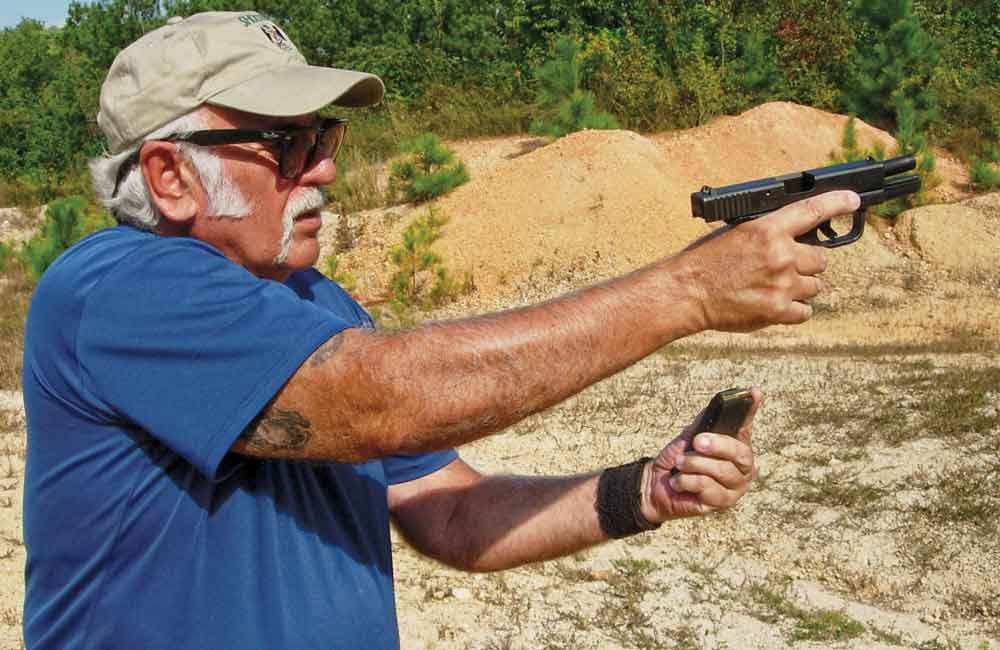
The pistol’s tactical reload starts by acquiring a fresh magazine, positioning it in the hand just like always. As you bring it up, drop the first finger to the inboard side of the magazine. (Left side of the mag for right-handed shooters; right side for lefties.) This frees up the thumb and first finger to collect the mag from the pistol. Bring the support hand underneath the gun, release the mag and trap it between thumb and first finger. Pull the partial mag out, index, align and seat the fresh mag. Position the partial in the hand as you normally do, feeling to make sure there’s some ammo in it.
Check the mag you removed for ammo. If there’s ammo, keep it. I put partial mags in my back pocket. Pouches are for full mags, and you can get to the back pocket regardless of body position — you can’t get to front pockets when kneeling or sitting. Empty mags are dropped, unless it’s a military/field action. Reestablish your firing grip and start scanning again, moving to better cover if necessary.
For 20-round AR mags, I use the technique just described. Due to their size, 30-rounders are a little different.
As always, grab the fresh mag down low. Bring it up to the one in the AR and grab it up high, clamping the two mags together. Press the mag release, and pull the partial mag out. Now the mags are staggered, with the fresh mag in the high position. Index and seat the full mag into the magwell.
During tactical reloads, the bolt is in battery. To lock the new mag in, the bolt carrier will press the top round down into the mag. Make sure you don’t overload. This makes it hard if not impossible to seat in place. I load 25 rounds in 30-round magazines.
The need for the tactical reload depends on how many rounds your weapon holds and how many were fired. Your 1911 holds eight rounds. It takes four shots to stop the threat. Once you’re behind cover and have made sure things are safe, you perform a tactical reload. Firing four rounds from a high-capacity or double-stack mag is a small percentage compared to what the magazine holds. The same is true for the AR, except that you have a lot more rounds in the magazine.
The ‘New York’ Reload
Your weapon runs out. You then present another, continuing to fire.
The “New York” reload is the quickest way to get hits on target once your primary weapon runs dry or malfunctions. Mas Ayoob coined the phrase “New York Reload” after Jim Cirillo — a member of the New York Stakeout Squad — told him, “I don’t put too much emphasis on the reload, because when my first gun goes out I go to the second one, and when that goes out I go to the third gun …” (Jim Cirillo’s Tales of the Stakeout Squad, Paul Kirchner, pg 35.)
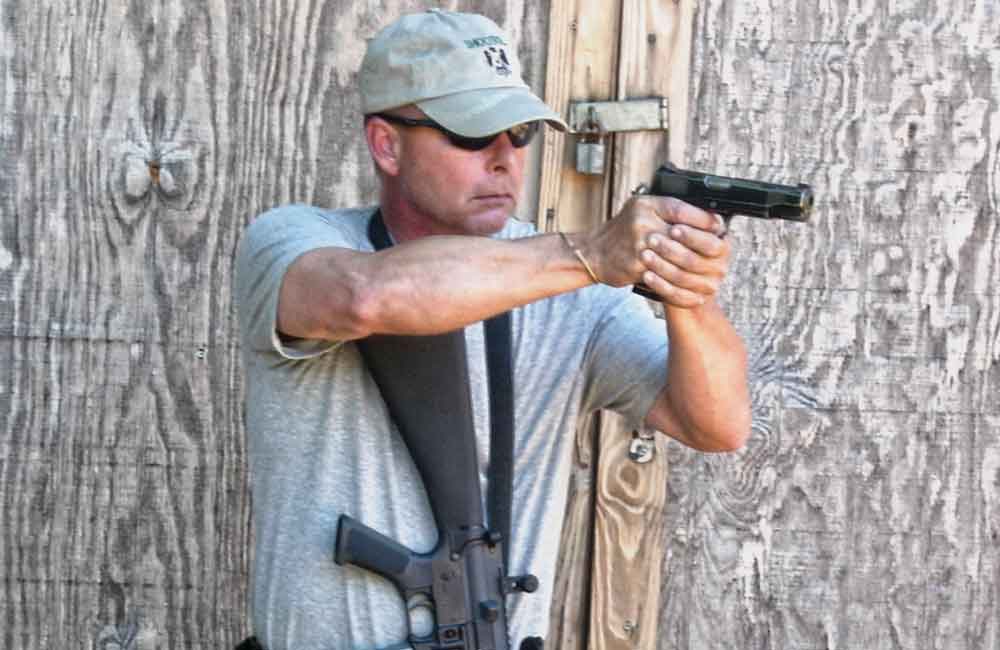
The “New York” reload for the AR is transitioning to the handgun. Shifting to another weapon is going to be at least 50 percent quicker than reloading. With malfunctions, the time saved by transitioning to another weapon will be even greater.
Perfecting Your Reloading
There are many different reloading techniques. The task is to discover what works best for your application. Regardless of the techniques you choose, practice is mandatory to learn how and when to apply them.
The best way to practice is dry fire, using dummy ammunition, working the different reloads over and over. Once these actions feel good, start practicing with your eyes closed. You need to know what it feels like and acquire the ability to manipulate your weapon without having or needing to see it.
Next, practice reloading from various positions — prone, on your back, upside down and kneeling. I highly recommend learning how to reload using only one hand. Hand/arm injuries are common in fights. Whenever you get the chance, practice using other styles and types of firearms.
You’re firing, engaging targets. You feel the weapon run empty, action locking to the rear. Immediately, the conscious mind says, “Reload.” The subconscious takes over, effortlessly and efficiently reloading. More accurate hits follow. You are in control, winning the fight.
Editor's Note: The article is from the Fall 2017 issue of Gun Digest the Magazine.

Next Step: Get your FREE Printable Target Pack
Enhance your shooting precision with our 62 MOA Targets, perfect for rifles and handguns. Crafted in collaboration with Storm Tactical for accuracy and versatility.
Subscribe to the Gun Digest email newsletter and get your downloadable target pack sent straight to your inbox. Stay updated with the latest firearms info in the industry.







